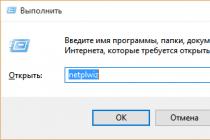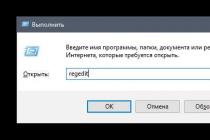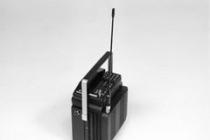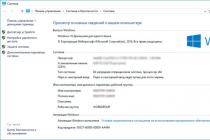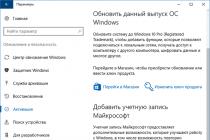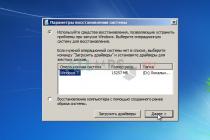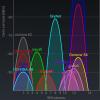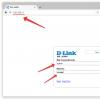There are situations when HDD fails (due to voltage problems, physical wear and tear, and so on) and it turns out that over the years the information accumulated is irretrievably lost (you can contact the data recovery specialists, but as a rule it costs a lot of money and not the fact that the information will be obtained restore) and therefore, in order to save myself from such fears, I decided to set up a RAID1 mirroring system, which I will talk about in this video tutorial.
In general, I will devote 2 lessons to this topic, in this we will consider setting up RAID1 via BIOS, and in the next setting RAID1 programmatically Windows tools 7.
And so, what is RAID in general, the abbreviation itself stands for an independent array of inexpensive disks and in general there are quite a few types of RAIDs, these are RAID 0,1,5,10, but in this video we will analyze the most common RAID1 or mirrored RAID.
What is the essence of RAID1, let's say you have 2 identical hard disk, they are combined into RAID1, and the operating system sees these two disks as one physical and when you write any information to this disc it is duplicated on both disks, it turns out, as it were, a mirror image of information on both disks.
And in case of failure of one of them, all information is saved on the second disk and by replacing the failed disk with a similar one, the mirror backup system is restored.
I would like to say right away that setting through the BIOS is more reliable, but also more complicated and is, perhaps, suitable for setting up on backup servers, at home it will be enough to set up the mirrors programmatically.
Well, now let's move on to the direct configuration of RAID1 through the BIOS, since this video cannot be recorded from the screen, the setting is not through Windows, then some screenshots will be of poor quality, but the point is not in the quality but in the usefulness of this information.
First, we go into the BIOS, for me it looks like this. The setting may be different for different motherboard models, but the principle is the same. We need to find the configuration menu for SATA or IDE devices, I have this menu in the additional \ SATA Configuration \ Here in the SATA menu, select RAID, save the changes and exit the BIOS.
The computer restarts and at startup, before trying to boot the operating system, a message appears, I have this Press Ctrl + I to enter the RAID configuration utility, run the utility.
This window displays the following information
The presence of a RAID - since I have not created it yet, therefore the inscription is not defined here, i.e. No RAID
The serial number of the device, I have 2 of them
Model hard disk(it is advisable to use discs of the same manufacturer and the same brand so that they are absolutely identical)
The volume of each disk (the volume must be the same on both disks, otherwise it will not work to create a mirrored RAID)
And the status, since the RAID has not yet been created, the status is not in the RAID array
In addition to the status table, there is also a menu that consists of the following items:
Creating a RAID array
Removing a RAID array
Resetting all disks to a non-RAID state (if there are several RAIDs, then all RAIDs will be deleted)
At this stage, I did not use the following other points, so I cannot say anything about them.
We enter the name of the RAID, I will call it Mirror, which means a mirror, then in the device manager it is under this name that this disk drive will be displayed.
Now in the information about RAID arrays there is a RAID named Mirror, RAID1 type, with a volume of 931.5 GB, the status is normal and it can be bootable.
If you want an operating system on it, then install the OS on it. Moreover, when I experimented, my operating system was on another disk, and after creating a mirrored RAID array, the operating system stopped loading. Those. dropped out when loading blue screen, therefore, if you have an OS on another disk, you should first create a RAID, and then install the OS so that all drivers are installed correctly!
After starting the OS, go to the device manager \ Disk drives and see the Mirror storage device there, i.e. this is the mirrored RAID1 disk.
After disconnecting one of the disks, the following message appears at startup with the RAID status Degraded (i.e. one of the disks is missing in the RAID), but regardless of this, the operating system continues to boot.
I have now booted from a faulty RAID, you can see this with special program that comes with the motherboard drivers.
Now I reconnect the disk and the state of the RAID goes into Rebuild (reconstruction, in this state, data from the mirrored disk is copied to the connected disk in order to restore the RAID functionality, depending on the size of the disk, this process can take a long time)
We load the OS and again look through the program what happens to the RAID, everything is OK, the RAID is restored, and with installed disk reconstruction is in progress. After completing this process, everything will work as before.
Again, before experimenting with RAID, it's best to save important information to another medium, just in case!
As for the advantages and disadvantages of this system:
The cost of 1 GB is 2 times higher (since you will need to purchase 2 disks to store the same amount of information)
High fault tolerance (although, there are such failures in which all the hardware burns out, but there is no way to protect yourself, except perhaps to store a copy of documents on a dedicated server) But, again, if the system is implemented on a backup server, then if everything burns out, then, in any case, copies of documents should remain on workstations, well, unless all the computers in office J have burned out
Hardware RAID (software RAID is created using a program, and no program is protected from glitches, therefore RAID through BIOS is more reliable)
Setting up a software RAID in a Windows environment is much easier than under Linux systems, however, it also has its own characteristics. Often, incomplete and fragmentary knowledge in this area leads to difficulties, and among administrators there are myths and legends about the "capriciousness" and "glitchiness" of this mechanism in Windows. In this article, we will try to fill this gap.
Before continuing, let us again recall the basic principle of constructing hardware arrays: one array element - one physical disk... The basis of program arrays is logical drive... Understanding this difference is the key to success, what is applicable to a hardware array can be disastrous for software, especially when it comes to the failure of one of the array elements.
To create software RAID in a Windows environment, we need to get acquainted with the concept of a dynamic disk, since software arrays can only be created on them. The reputation of dynamic disks is ambiguous, many administrators shy away from them like hell with incense. And in vain, having memorized a few simple rules working with dynamic disks becomes as easy as normal.
The main rule: install or Windows boot from a dynamic volume is only possible if this disk has been converted from a system or boot volume. Those. if you have several copies of the OS, then after converting the disk to dynamic, you can only boot the instance that is on the boot partition.
Based on this rule, it becomes obvious that only a mirrored array (RAID1) can be created for the boot and system volumes, the creation of other types of arrays is impossible, since they imply the installation of the system on a previously created partition.
Is it worth the candle? Despite all the limitations, it is worth it. The main disadvantage of hardware arrays is binding to specific model controller. If your motherboard or controller burns out, you will need exactly the same one (or a motherboard with a similar controller), otherwise you can say goodbye to data. In the case of software RAID, a machine with installed Windows Server.
In practice, work with software arrays and dynamic disks is done through a snap-in Storage - Disk Management v Server Manager... To convert disks to dynamic, just right-click one of them and select Convert to dynamic disk , in the window that opens, you can select several disks to convert at once.
It is worth remembering that this operation is irreversible and special attention should be paid to the system partition, re-partition boot disk you will not succeed (or rather, it will no longer be bootable after that), the only thing you can do is expand the volume using unallocated space.
The next step is to create an array, right-click on the desired volume and select the desired option, in the case of system and boot volumes, there will be one option - a mirror, then you will be prompted to select a disk for placement mirrored volume... Upon completion of the creation of the array, its resynchronization will immediately begin.
By connecting additional drives we will get much more opportunities, you can either combine several disks into a separate volume, or create RAID 0, 1 or 5.
In general, nothing complicated, but many restrictions can scare anyone away. But do not rush to make hasty conclusions, judging by common sense, there are no serious obstacles, since it is usually customary to distribute the system and data across different disks, given the penny cost of modern disks, this does not entail significant costs. We, for example, for our test server created a mirror for system disk and RAID5 for data.
Moreover, all this pleasure can be realized on the most ordinary budget motherboard considering that the performance of a software array is no different from that of a cheap hardware array, this technology looks very attractive. We will talk about methods of ensuring fault tolerance and actions in case of disk failure in our next article.
How to create a software RAID 1 array (mirror) using Windows 10, 8.1, 8, 7, Vista.
What is RAID 1?
RAID 1 is an array of two disk media, information on which is duplicated on both disks. That is, you have two disks that are full copies of each other. Why is this done? First of all, to increase the reliability of information storage. Since the probability of failure of both disks at the same time is small, in the event of failure of one disk, you will always have a copy of all information on the second.
You can store any information on a RAID 1 array just like on a regular hard disk, which allows you not to worry about an important project that you have been working on very much long time.
Today we will look at how a RAID array is created using Windows itself when using two empty disks (I can confidently say that this instruction works on Windows 7, 8 and 8.1).
Instructions:
1) First, install hard drives v system unit and start your computer.
2) Open “Control Panel → System and Security → Administrative Tools → Computer Management → Storage → Disk Management”. When you turn it on for the first time, the utility will inform you about the installation of new disk devices and offer to choose a partition for them. If you have a disk of 2.2 TB or more, choose GPT, if less, then choose MBR.
3) At the bottom of the window, we find one of our new hard drives and click on it with the right key. We select "Create mirrored volume":
4) The Image Wizard will open. Click further.

5) On this page you need to add a disk that will duplicate the previously selected disk. Therefore, select the disk on the left and click the "Add" button: Click next.


6) Choose the letter that will be designated new volume... I chose M for Mirror. Click on next.

7) We set file system, cluster size and volume name. I also recommend checking the box next to “ Quick format”, Let him do everything at once. And again on.

8) We check what we have done, if everything is correct, we press "Finish".

9) The system will warn you that it will convert the disks to dynamic, and we will not be able to create a boot volume on them. There is nowhere to retreat, we press "Yes". :)
Hello. Today I got my hands on two brand new hard drives, I thought for a long time what can be done with them to help my readers. On reflection, I finally decided that it was better than a story about RAID 1, created by myself operating system, I can hardly write anything. So what is RAID 1?
RAID 1 is an array of two disk media, information on which is duplicated on both disks. That is, you have two disks that are full copies of each other. Why is this done? First of all, to increase the reliability of information storage. Since the probability of failure of both drives at the same time is small, in the event of failure of one drive, you will always have a copy of all information on the second. You can store any information on a RAID 1 array just like on a regular hard disk, which allows you not to worry about an important project that you have been working on for a very long time.
Today we will look at how a RAID array is created using Windows itself when using two empty disks (I confidently declare that this instruction works on Windows 7, 8 and 8.1). If you are interested in creating a RAID array using an already full disk, then you need one on this topic.
And, in fact, instructions for your acquaintance:
1) First, install the hard drives in the system unit and start the computer.
2) Open “Control Panel → System and Security → Administrative Tools → Computer Management → Storage → Disk Management”. When you turn it on for the first time, the utility will inform you about the installation of new disk devices and offer to choose a partition for them. If you have a disk of 2.2 TB or more, choose GPT, if less, then choose MBR.
3) At the bottom of the window, find one of our new hard drives and right-click on it. We select "Create mirrored volume":
4) The Image Wizard will open. Click further. 
5) On this page you need to add a disk that will duplicate the previously selected disk. Therefore, select the disk in the left part and press the "Add" button: 

Click further.
6) Select the letter that will be used to designate the new volume. I chose M for Mirror. Click on next. 
7) Set the file system, cluster size and volume name. I also recommend checking the box next to "Quick Format", let it do everything at once. And again further. 
8) We check what we have done, if everything is correct, we press "Finish". 




